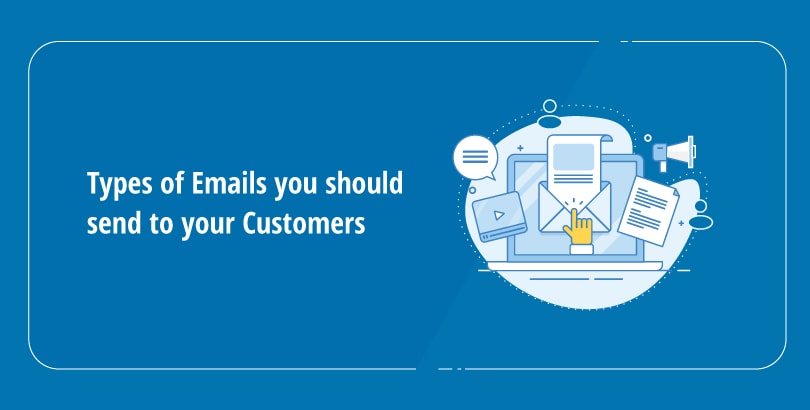Email marketing is an imperative part of the digital marketing field. According to Radicati, 246.5 billion emails are sent or received every single day. here. I’ll show you which types of emails you should send to your potential customers.
Using email as a form of communication is exponentially increasing. Approximately 3.7 billion users all over the world send emails.
Email marketing is a simple way to communicate. It is also considered to be the most professional way to interact with your clients or customers.
When it comes to communicating with clients or customers, the first thing you need to consider is how to keep your customers engaged.
The following includes types of emails, along with tips and benefits of each:
1. Newsletter Emails
According to Clutch. co, 83% of newsletters are sent via email by the companies. The main purpose of newsletter emails is to inform clients regarding company news, build a professional relationship with your audience. It also improves brand awareness. Newsletter emails are beneficial to all types of businesses.
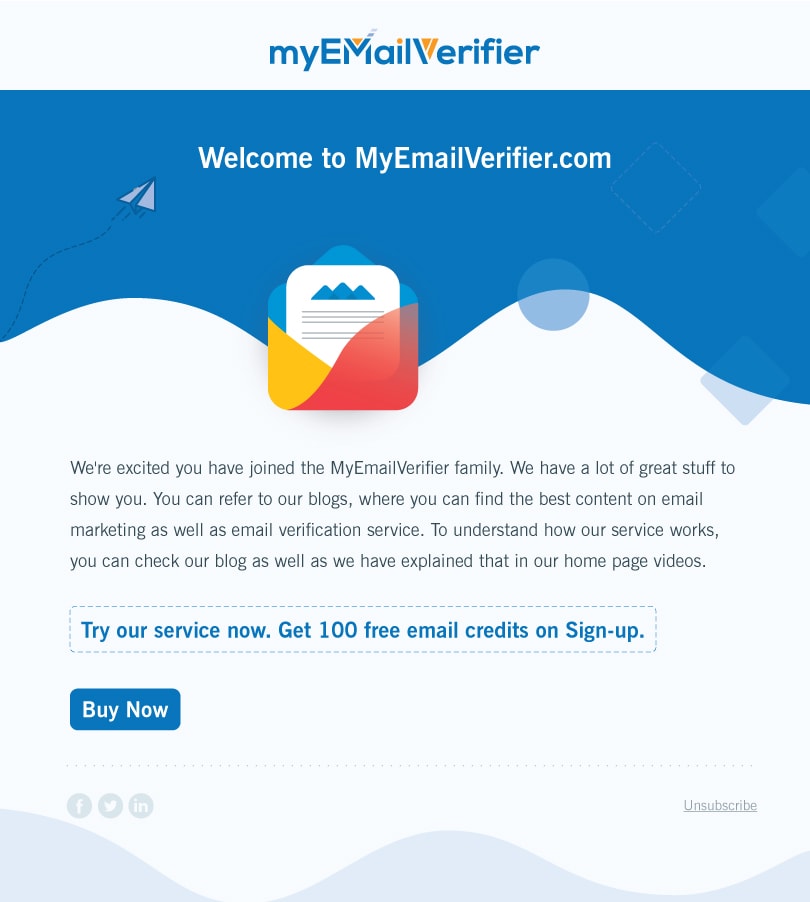
Tips for creating newsletter emails:
1) Keep the text short, and include only useful information.
2) Use an eye-catching, attractive design, and include relevant images.
3) Include business contact information. This helps customers keep in touch.
4) Use call-to-action links within the email.
Benefits of newsletter emails:
1) Informs your customers regarding company news.
2) It helps your business build professional relationships with customers.
3) Improves your brand reputation and reliability.
4) Assists your business in sending the latest information about your site content (e.g., Blog)
2. Welcome Emails:
According to Invesp, welcome emails that include special offers increase the revenue by 30% per email compared to a welcome email without any offers.
The purpose of welcome emails is to welcome new subscribers and establish a positive relationship. All businesses can send these types of emails to clients or customers.
Before sending welcome emails, a business needs to be aware of when a new customer signs up or subscribes.
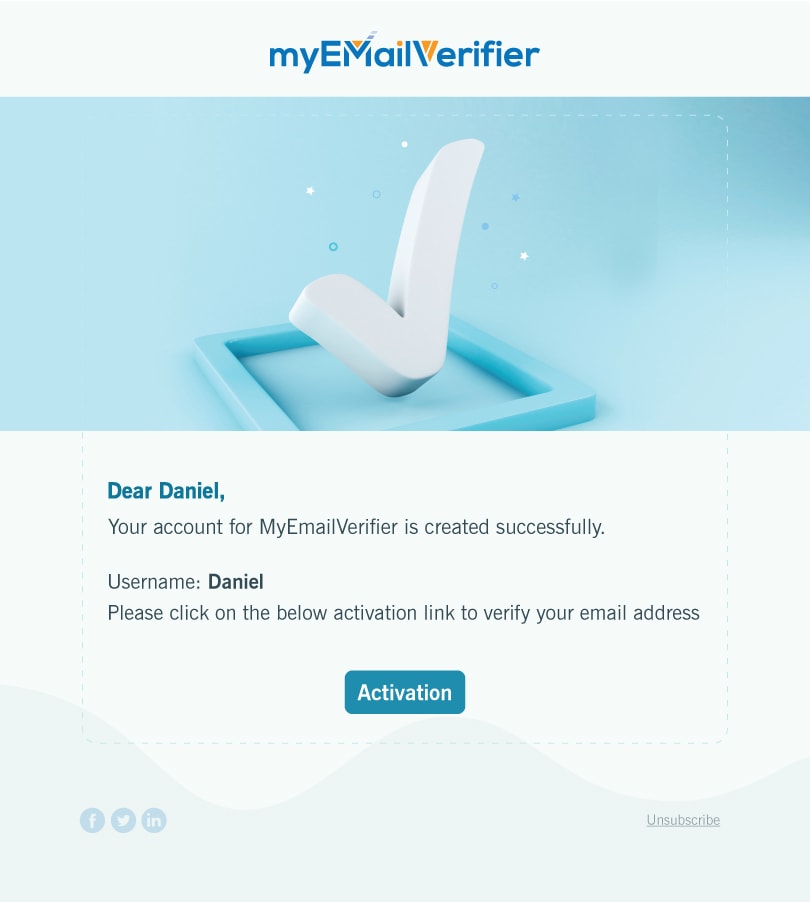
Tips for creating welcome emails:
1) Invite new subscribers to build your client base.
2) Use a warm conversational tone throughout.
3) Offer possible customer rewards, discounts, and special offers, etc. unique to your business.
4) Remind subscribers of the benefits they will receive from your service, product, etc.
Benefits of welcome emails:
1) It starts a positive conversation with potential customers.
2) It helps you to connect your business professionally with customers and clients.
3) It helps you create interest and engagement from your customers.
3. Testimonial Emails:
According to BigCommerce, 92% of customers read online reviews and testimonials before purchasing. Approximately 88% of customers trust online reviews.
Positive testimonials increase a customer’s trust in a company with 72%. A testimonial email’s purpose is to show how valuable your service or your product is through customer feedback.
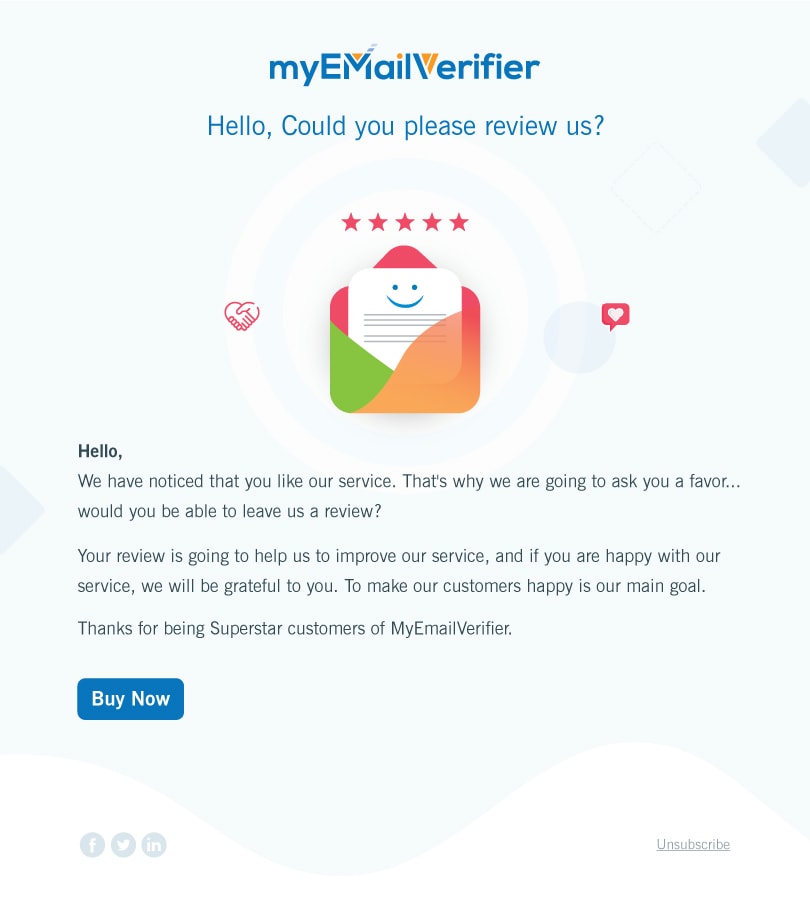
Tips for creating testimonial emails:
1) Create attention-getting emails by including photos or videos from past testimonials.
2) Make the content easy to understand.
3) Offer additional information regarding the service or product through testimonials.
Benefits of testimonial emails:
1) It helps you build a trusted brand image.
2) Receive more reviews for your service or product.
3) Gauge how your customers react with your service or product.
4. Offer Emails:
According to Campaign Monitor, email marketing generates $44 in ROI for every $1 spent. Offer emails, also known as promotional emails. They are used to drive more sales while also offering customers the best price.
These emails help to maintain the customer’s intention of your service or products. The main purpose of offer emails is to attract more customers to services or products.
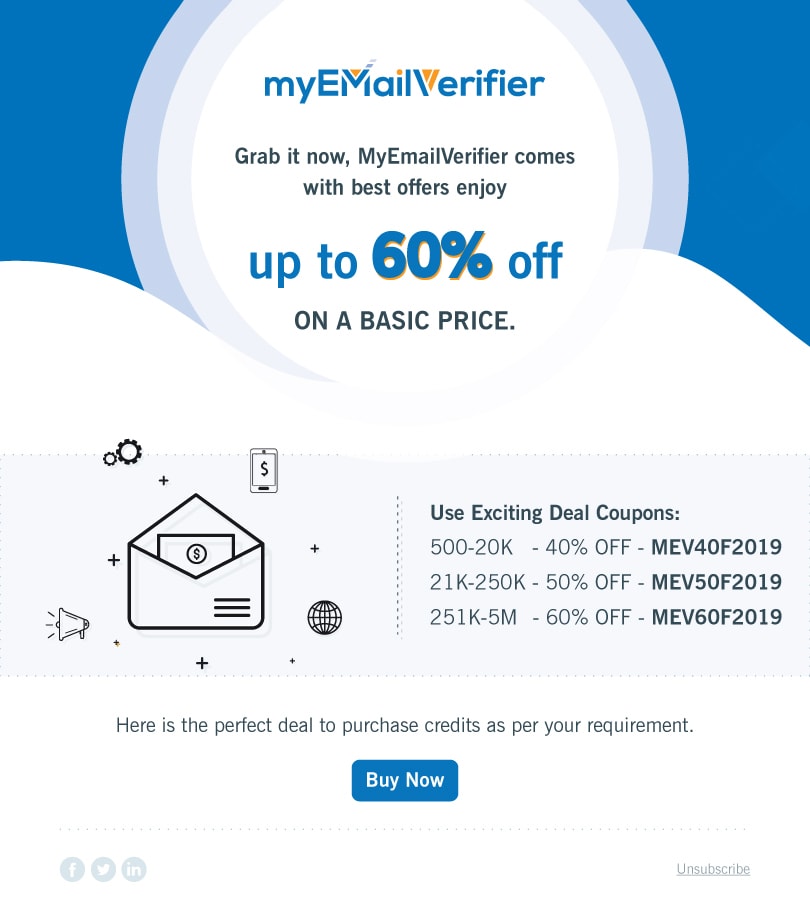
Tips for creating offer emails:
1) Create discount offer images to draw your customer’s attention to special deals.
2) Use call-to-action links for easy access to your service or product.
3) Provide an unsubscribe button.
Benefits of offer emails:
1) Increases sales by drawing attention to exclusive offers.
2) Builds customer loyalty by providing deals a competitor does not.
3) It helps to attract more customers to your business.
5. New Announcement/Inventory Emails:
According to Statista, 61% of customers prefer to be contacted by a brand through email. It is the quickest way to boost your sales with current customers.
The main purpose of announcement emails is to make customers aware of new products or service updates. Any business can inform their customers regarding updates.
However, businesses within the e-commerce, fashion, and retail fields receive the most benefits from using these emails.

Tips for creating new announcement emails:
1) Send your customers updates about new products.
2) Communicate with customers instantly when new products arrive.
3) Use attractive and relevant images of the product or service.
4) Convey your point in the subject line of the email.
Benefits of new announcement emails:
1) Customers will instantly receive the latest updates about your service or product.
2) Builds a strong connection with your customers by keeping them informed.
3) Increases are buying from your customers.
6. Abandoned Cart Emails:
According to Moosend, 69% of online carts abandon by users. The average email open rates are 45%, and the click-through rate is 21%.
That means a single abandoned cart email can convert 10% of people as customers. The main purpose of abandoned cart emails is to entice or remind customers to complete a purchase.
If you send a customer an abandoned cart email, there is a possibility that the customer will buy that product. E-commerce businesses mostly use abandoned cart emails.
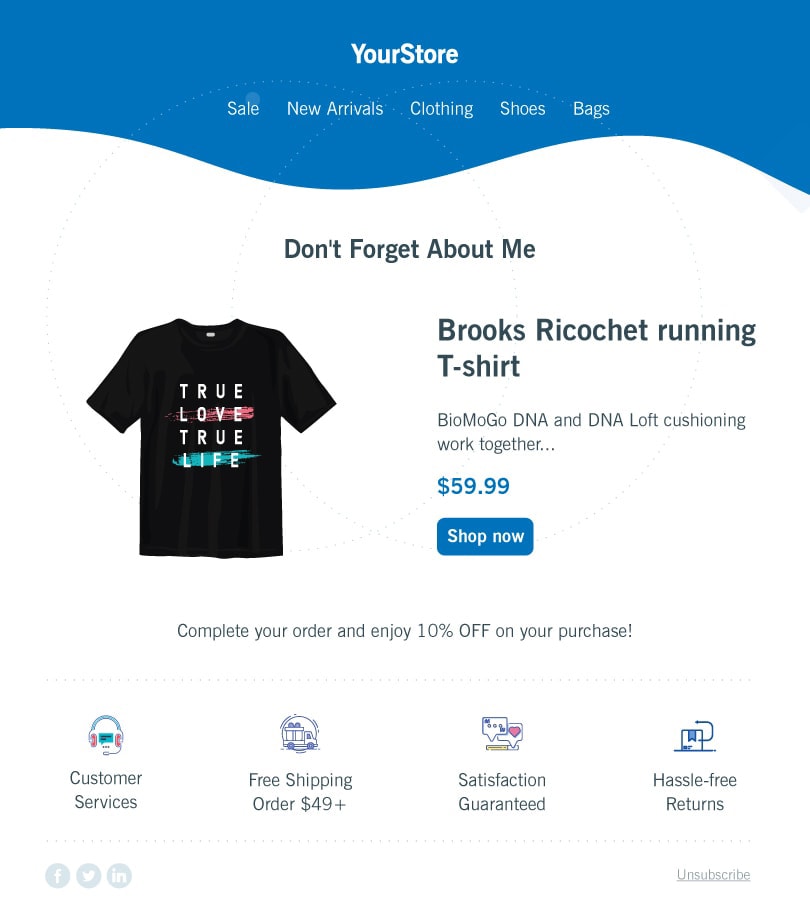
Tips for creating abandoned cart emails:
1) Use an attractive design by including the item(s) within the abandoned cart
2) Keep the message short and simple.
3) Use a call-to-action button for easy purchase of items.
Benefits of abandoned cart emails:
1) Reminds customers that there save items in an abandoned cart.
2) It helps you bring different customers to your site.
3) It helps you generate more business by continuing communication with customers.
7. Milestone Emails/ Anniversary Emails:
According to YesMarketing, milestone or anniversary emails boost response and conversion rates up to 13% with clicks that result in a purchase.
Businesses can celebrate the first anniversary of their subscribers. Also, creating emails that thank subscribers for being a part of the business has a huge impact on a customer’s value.
The purpose of milestone emails is to celebrate a victory and make your audience feel special.
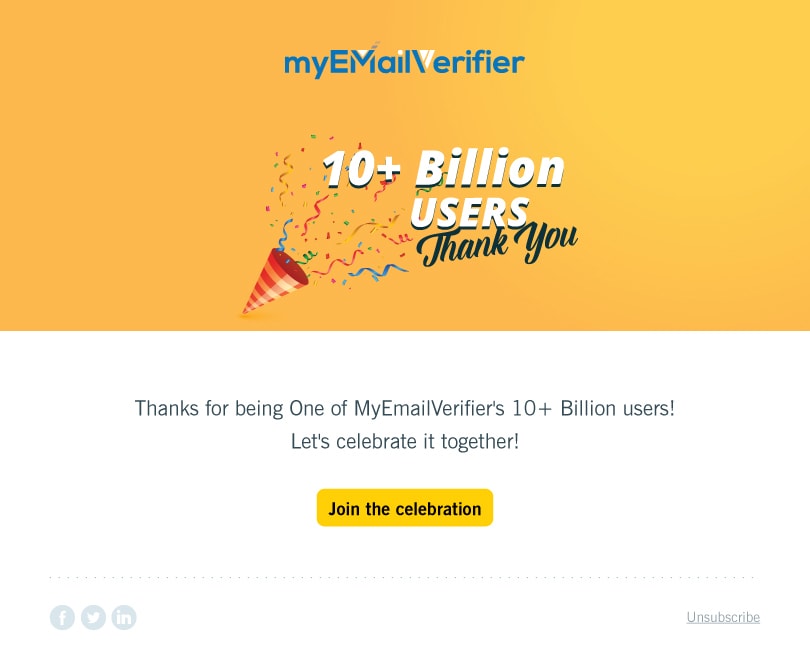
Tips for creating milestone emails:
1) Use special milestone or anniversary images.
2) Make customers feel special by using a warm, and conversational tone.
3) Provide a call-to-action button for special offers that celebrate the milestone.
Benefits of milestone emails:
1) It provides customers with a positive experience.
2) Drives more sales by reminding customers that they are largely responsible for the success of the business.
8. Confirmation Emails:
According to Borrell Associates, 64% of customers consider confirmation emails to be the most valuable email form.
For example, confirmation emails open 8 times more than regular marketing emails. The main purpose of a confirmation email is to send customers proof of a completed action.
Tips for creating confirmation emails:
1) A simple and straight forward design is best.
2) Include proof within the text that the action the customer took was completed.
3) Provide what to expect after confirmation of an order. (For example, how long the product takes to ship.)
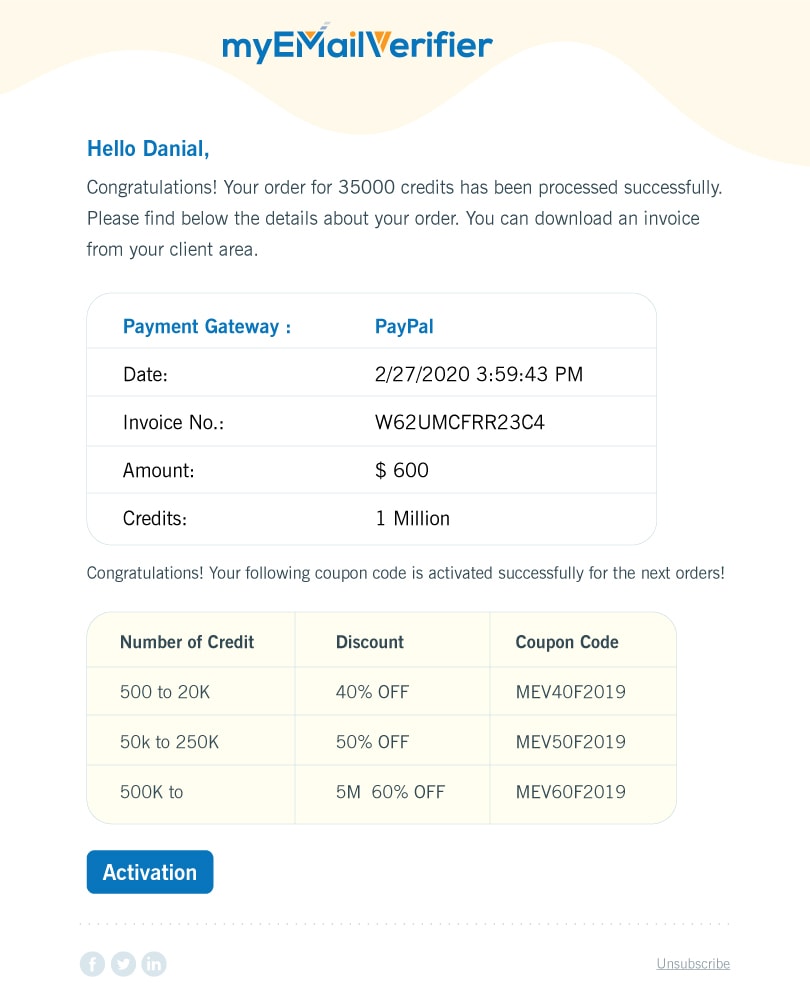
Benefits of confirmation emails:
1) High email open rates.
2) It helps you to increases customer trust and reliability.
Wrap Up
Different Types of Emails Provide Customers with Valuable Information. In conclusion, as long as a business focuses on sharing key information in the proper format.
This will help to generate new subscribers and convert your subscribers into paying customers. But for that, you need to add key information for different emails.
No matter the type of business, email is a convenient and simple way to keep in contact with your customers. Use different types of email formats depending on the topic. Customers will continue to be happy with the services and purchase your products by receiving current updates.
